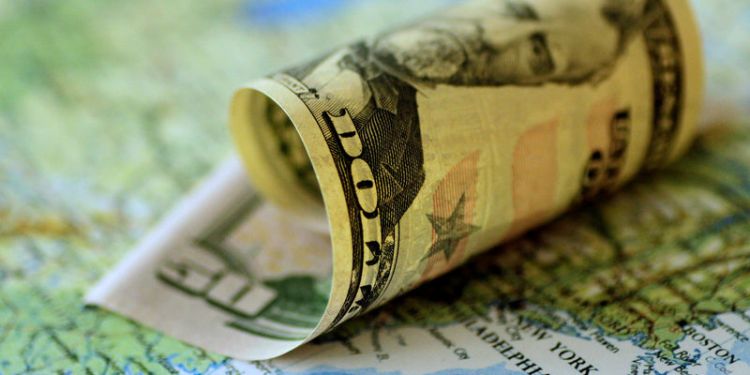 © Reuters. Illustration photo of a U.S. Dollar note
© Reuters. Illustration photo of a U.S. Dollar noteBy Hari Kishan
BENGALURU (Reuters) – The U.S. dollar will lose strength against a basket of other major currencies over the coming year, according to a Reuters poll of strategists who also said a positive outcome to U.S.-China trade negotiations was already priced in to their outlook and will not likely give the greenback a lift.
Last year, the U.S. currency was propped up by sweeping tax cuts championed by President Donald Trump, with the economy expanding above its long-term trend for most of the year, but falling short of 3 percent for 2018 as a whole.
Now a slowing U.S. economy, a widening fiscal deficit and a dovish Federal Reserve are limiting the dollar’s strength against other major currencies compared with 2018. With all those factors in play, the currency is forecast to give back some gains over the coming year.
“As we pointed out at the start of this year, we see the relative cyclical support for the dollar being less favorable this year than last and that suggests to us some dollar depreciation ahead. The end of balance sheet shrinkage will reinforce a much less active Fed on raising the fed funds rate,” said Lee Hardman, currency strategist at MUFG.
“In addition, there is already evidence of foreign investors being more reluctant to invest in U.S. portfolio securities and we view this reduced appetite as partly a consequence of the level of the U.S. dollar and partly on concerns over the deteriorating budget deficit outlook.”
But with global economic growth slowing and central banks expected to lean towards extending their easy monetary policy, any gains for other major currencies against the dollar will be limited.
The dollar is expected to weaken, with the euro forecast at $1.19 in a year, over a 5 percent rise from $1.13 on Wednesday, according to the poll of over 70 currency strategists taken Feb 28-March 6.
But that outlook for 12 months ahead was a downgrade for the single currency against the dollar compared with last month.
That is largely driven by a widely held view the European Central Bank will dole out new cheap loans to banks, also known as Targeted Long-Term Refinancing Operations (TLTROs), something economists in a separate Reuters poll predicted could happen by July.
“We are not anticipating there will be lot of wind in the (dollar’s) sails,” said Jane Foley, head of FX strategy at Rabobank, the top FX forecaster for 2018.
“But if you get to an environment where the market really is anticipating more TLTROs from the ECB, I don’t think the euro is going to be on a firm footing. And in that environment, there is just perhaps more incentive for the dollar to remain well-supported – no huge gains, but supported.”
Any resolution to an ongoing trade dispute between the United States and China is also unlikely to change the fortunes of the dollar, according to analysts who provided an answer to a separate question.
If the two countries do achieve a trade deal within the next month or so, the dollar is expected to make no significant move, while in a no-deal scenario, the greenback was forecast to rise by 1 percent.
“The dollar should correct if there is an agreement between China and the U.S. due to the reduction of safe-haven flows. Nevertheless, the market is already pricing in a high probability of an agreement. Thus, the depreciation should be limited,” said Roberto Cobo Garcia, FX strategist at BBVA (MC:).
“If there is no agreement, the dollar could at least trade back towards the recent highs. The negative impact of this scenario on global risk appetite and the Chinese economy would definitely favor flows into safe-haven assets.”
(Polling by Indradip Ghosh and Mumal Rathore; Editing by Ross Finley and Steve Orlofsky)
Source: Investing.com



















